Introduction
Biofilms consist of microbial groups that attach to a specific surface and are protected by a polymer matrix. The infected root canal system encompasses all three components necessary for the formation of a microbial community: solid remnants, fluid flows, and microorganisms. As pathogenic bacteria show increasing resistance to antibiotics and chemotherapeutic agents, there is growing interest among researchers in alternative products and treatment options for oral diseases.
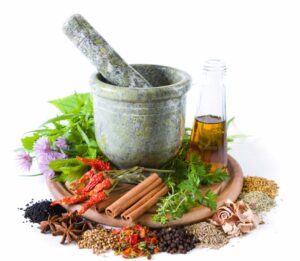
The use of herbal remedies for root canal therapy is gaining traction. The term “Phytotherapy, Phytomedicine” refers to the application of herbal treatments for various health conditions. The benefits of using herbal alternatives include their availability, shelf life, cost-effectiveness, low toxicity, and the absence of microbial resistance.
Need For Herbal Endodontics
- Rise in Antibiotic Resistance-Overuse of conventional antibiotics has led to resistant microbial strains. Herbal agents (e.g., Azadirachta indica, Curcuma longa) possess broad antimicrobial actions, reducing dependence on synthetic antibiotics.
- Biocompatibility and Reduced Cytotoxicity-Many chemical irrigants like sodium hypochlorite and chlorhexidine show tissue toxicity. Herbal agents are generally more biocompatible and safer for periapical tissues.
- Anti-inflammatory and Antioxidant Properties-Herbs provide additional benefits such as reducing inflammation and promoting healing. These properties are not inherent in most conventional endodontic agents.
- Cost-Effectiveness and Accessibility-Herbal products are significantly cheaper and widely available, especially in developing countries. Makes endodontic care more affordable without compromising quality.
- Lower Adverse Reactions-Synthetic chemicals may cause allergies, staining, taste alteration, or tissue damage. Herbs have fewer side-effects when properly standardized.
- Multi-Mechanism Action-Many herbs act as antimicrobial, antifungal, antiviral, anti-inflammatory, antioxidant, and analgesic agents simultaneously. This multimodal activity is particularly useful in infected root canals with complex microbiota.
- Growing Patient Preference for Natural Therapies– There is an increased awareness toward organic and natural healthcare options globally. Patients perceive herbal formulations as safer and more holistic.
- Environmental Sustainability-Herbal agents are biodegradable and eco-friendly compared to chemical irrigants which may cause environmental toxicity.
- Potential for Novel Formulations-Herbs allow development of gels, nanoparticles, irrigants, intracanal medicaments, and sealers with enhanced properties.
Applications Of Herbal Endodontics
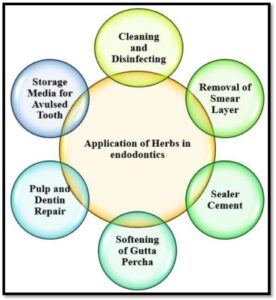
Herbal Agents For Pulp And Dentin Repair
A viable alternative for pulp capping could be natural herbs. A team of researchers found that the natural product known as baicalin, a flavonoid extracted from the plant’s root, improved the angiogenesis and odontoblastic differentiation of human dental pulp cells by encouraging angiogenic factors and mineralization of alkaline extracted from the plant’s root.
Herbal Root Canal Irrigants
The use of biologic therapy derived from natural plants is growing in popularity in endodontics. Herbal alternatives have gained popularity because to their low toxicity, extended shelf life, affordability, and cost-effectiveness. The use of natural remedies in addition to dental care has grown in popularity recently. This could be described as ethnopharmacology or phytotherapy.
Herbal Endodontic Sealers
Researchers are looking for natural alternatives to synthetic pharmaceuticals due to the ongoing rise in antibiotic resistance strains and adverse effects induced by synthetic drugs. Licorice, Bakul and Guguchi added to the commercial root canal sealers proved to show significant inhibition of bacterial growth along with efficient antimicrobial properties. Amla, Miswak and Nutmeg added to the commercial sealers also resulted into rich source of bioactive compounds that possess antimicrobial properties having bacterial inhibitory zones. Few investigators used Cinnamon oil to evaluate for antimicrobial properties and it proved to show Maximum zone of bacterial inhibition. Hence these herbal sealers need more research in dentistry to be more practically available for dentists.
Herbal Disinfection Of Guttapercha Cones
Gutta percha cones gets contaminated during handling procedures or during storage hence require chairside disinfection protocols before obturatiom . There are various agents available for sterilization of these cones like chlorhexidine , sodium hypochorite CHX, hydrogen peroxide SH , saline, but they may affect the surface texture of the cones. Aloe vera gel, on the other hand, demonstrated significantly superior results than CHX and SH groups, according to research, which may be related to its antibacterial qualities. This is consistent with its antibacterial qualities, which have previously been linked to the treatment of gastric ulcers and cosmetics.The antibacterial activity of aloe vera gel is attributed to a range of secondary metabolites, including anthraquinone glycosides, glycoproteins, γ-lanoline acid, prostaglandins, and mucopolysaccharides. AV gel has the benefit of decontaminating the cone in just one minute.
Medicinal Herbs Use in Endodontics
Table 1 Shows Uses Of Herbal Medicines In Endodontics
| S.No | Phytomedicines Used In Endodontics | Active Ingredients |
| 1. | Azadiarachta indica – Neem | Nimbin, nimbidinin, nimbolide and nimbidinic acid |
| 2. | Melaleuca alternifolia – Tea tree oil | Terpinen-4-ol |
| 3. | Curcuma longa – Turmeric | Curcuminoids, tumerone, atlantone & zingiberone |
| 4. | Morinda citrifolia – Noni fruit: | Acubin, L-asperuloside, atizarin & anthraquinone |
| 5. | Triphala | Tannins, quinones, flavonoids, gallic acid and vitamin C. |
| 6. | Syzigium aromaticum – Clove | Eugenol, isoeugenol and vanillin. |
| 7. | Acacia nilotica – Babool | Tannins, phenolic compounds, essential oils & flavonoids |
| 8. | Allium sativa – Garlic | Allicin |
| 9. | Zingiber officinale – Ginger | Zingerone, gingerol & 6-shagoal |
| 10. | Propolis – Honey bee wax | Flavonoids and cinnamic acid derivatives |
| 11. | Aloe barbadenis – Aloe vera | Aloin and aloe-emodin |
| 12. | Agaricus bisporus – Mushroom | Plectasin, confuentin, grifolin and neogrifolin |
| 13. | Arctium lappa | Sesquiterpene lactones and inulin |
| 14. | Glycyrrhiza glabra – Liquorice | Triterpenoid compound – Glycyrrhizin |
| 15. | Rhus plants | Tannins & gallic acids |
| 16. | Vaccinium macrocarpon – Cranberry | Flavonoids, phenolic acids, anthocyanins and condensed tannins |
| 17. | Psidium guajava – Guava | Guajaverin |
| 18. | Riccinus communis – Castor | Ricinoleic acid |
Herbendodontics– Phytotherapy In Endodontics: A Review-Vishnuvardhini.S,- Biomed Pharmacol J 2018;11(2)
Challenges Faced In Herbal Endodontics
- 1. Lack of Standardization-Herbal extracts vary in concentration, purity, and bioactive components depending on plant source, harvesting season, and extraction method. Absence of standardized formulations makes reproducibility difficult.
- 2. Limited High-Quality Clinical Evidence-Most studies are in vitro or animal-based. Very few randomized controlled clinical trials exist to validate long-term outcomes.
- Variability in Antimicrobial Potency-Herbal agents show inconsistent activity against resistant endodontic pathogens like Enterococcus faecalis and Candida albicans. Stability of antimicrobial components can degrade over time.
- 4. Issues With Shelf-Life and Stability-Many herbal formulations are prone to oxidation, microbial contamination, and loss of potency. Lack of preservatives or stabilizers further shortens shelf-life.
- Difficulty in Penetration into Dentinal Tubules-Herbal irrigants often have higher molecular sizes and may not penetrate deeply into dentinal tubules compared to NaOCl or chlorhexidine.
- Inefficient Tissue Dissolution-Most herbal agents lack the ability to dissolve necrotic and vital pulp tissue as effectively as sodium hypochlorite, limiting their use as sole irrigants.
- Challenges in Smear Layer Removal-Not all herbal products are able to remove the smear layer predictably, especially compared to EDTA.
- Potential for Allergic Reactions-Some patients may show hypersensitivity to herbal components like clove oil, turmeric, neem, or essential oils.
- Inconsistent Formulation and Delivery Methods-Difficulty producing ready-to-use gels, irrigants, or intracanal medicaments with uniform consistency.
- 10. Regulatory and Quality Control Issues-Herbal dental products often fall under loosely regulated categories. Lack of internationally accepted guidelines for safety testing, toxicity profiling, and manufacturing.
- Taste and Patient Acceptance-Strong taste or odor (e.g., clove, neem, garlic) may reduce patient compliance.
- Risk of Staining-Some herbal medicaments (e.g., turmeric) can stain tooth structure or temporary restorations hence the acceptability by patients become lower.
Conclusion
Herbal Endodontics represents a promising and biologically sustainable approach within modern endodontic therapy. With their inherent antimicrobial, anti-inflammatory, antioxidant, and biocompatible properties, herbal alternatives such as Azadirachta indica (neem), Curcuma longa (turmeric), Aloe vera, propolis, and essential oils have shown significant potential as irrigants, intracanal medicaments, and obturating adjuncts. These natural agents offer advantages such as reduced cytotoxicity, lower risk of antibiotic resistance, and improved patient acceptance, making them suitable for long-term applications in root canal disinfection.
However, despite encouraging laboratory and clinical evidence, herbal materials still require standardization of formulation, concentration, delivery methods, and long-term safety. Comparative studies with gold-standard endodontic agents like sodium hypochlorite and chlorhexidine are essential to validate their clinical reliability. Future research must also focus on optimizing their shelf life, penetration ability, and effectiveness against complex biofilms.
In conclusion, herbal Endodontics holds substantial potential as an adjunct or alternative to conventional chemical agents, but more robust clinical trials and scientific validation are needed before they can be fully integrated into routine endodontic practice.
References
- Herbal Medications in Endodontics and Its Application—A Review of Literature MohmedIsaqali Karobari 1- MDPI-2022.
- Effect of Different Chemical and Herbal Disinfectant Solutions on the Mechanical and Physical Properties of Gutta-percha: An In Vitro Study Ameena Nausheen1,-2019
- Herbal Endodontic Irrigants – A Review 1Prasangi Vijaya Bhanu-2023 International Journal Dental and Medical Sciences Research Volume 5, Issue 2, Mar – Apr 2023.
- Herbendodontics–Phytotherapy In Endodontics: A Review-Vishnuvardhini.S,- Biomed Pharmacol J 2018;11(2)

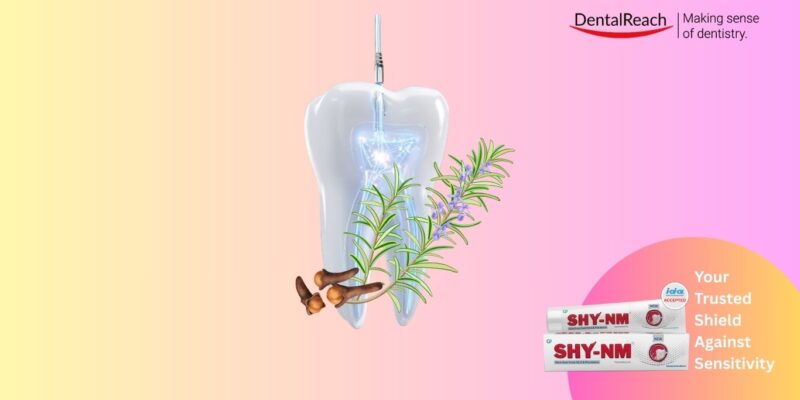




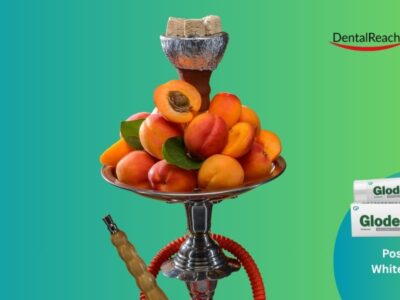









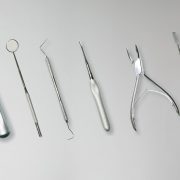



Comments